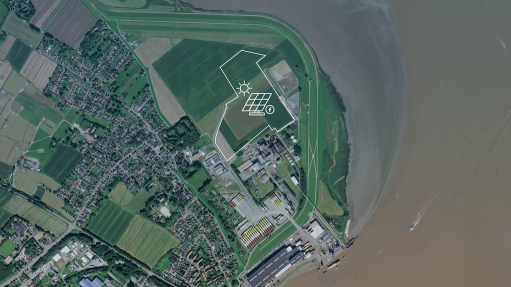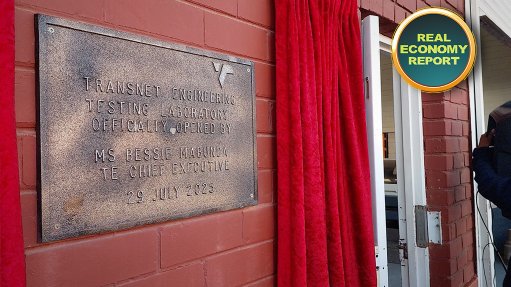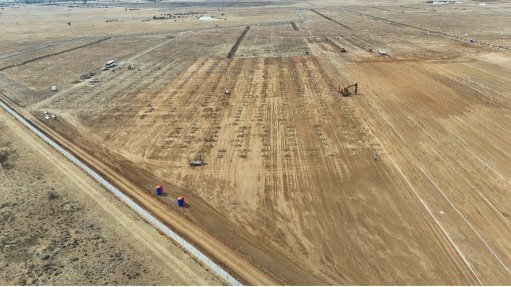Opinion: Digging for Common Ground: Navigating the mining of critical minerals and the impact on Indigenous people
In this article, conflict management and development practice Concentric Alliance (CA) executive director Dr Renosi Mokate and senior associate Ramabina Mahapa write that mining companies with interests in critical minerals need to think about how best to engage with and include Indigenous people across all geographies throughout the value chain and the life of an asset.
The demand for critical minerals is expected to increase significantly as countries and industries seek to transition to a low-carbon future.
In countries such as Australia, Chile, the US and Namibia, critical mineral projects will take place in areas that overlap with Indigenous people’s land rights. According to research by the Australian-based Centre for Social Responsibility in Mining and its partners, the mining of lithium and vanadium will predominantly occur on or near land connected to Indigenous people. The same research revealed that over half of the energy transition minerals and metals resource base is located on or near the lands of Indigenous and peasant populations.
There is growing international recognition that Indigenous people are vulnerable to the adverse impacts of mining, particularly given that Indigenous communities are minority groups in their countries, with limited political representation and often lower levels of education. Indigenous people face higher risks of poverty, exploitation and marginalisation. Given this growing recognition, it is becoming increasingly important for companies to seek to minimise the adverse impacts of mining activities, foster respect for the human rights of Indigenous people and promote development benefits in culturally appropriate ways.
Several trends are emerging globally concerning Indigenous people. The first involves the complexities of defining indigeneity. Human rights scholars and activists tend to primarily consider pre-colonial hunter-gatherer and pastoralist communities as Indigenous people. While this is appropriate and offers a clear definition when dealing with Indigenous people in places such as the Americas and Australia, in the African context, there are complexities in defining who is indigenous.
For Africa, an approach that focuses on hunter-gatherers and pastoralists prejudices those communities that developed agriculture and could support larger populations and who today form large parts of the electorate and national populations. Additionally, questions of indigeneity have contributed to ethnic violence in parts of the continent and, therefore, must be approached with appropriate care.
Understanding the context in each country and the historical treatment of Indigenous people will be vital for mining companies. That understanding must inform their policies and approaches. For example, the Khoi-San people in South Africa are in a more precarious position than other Indigenous people around the world. This is because they have been rendered invisible as a distinct group because of forced assimilation into other ethnic groups and being classified as ‘Coloured’ during the colonial and Apartheid eras. The implication is that even today, there is no clear data indicating the official number of Khoi-San people that currently live in South Africa. Moreover, finding statistics on their socioeconomic status is challenging.
Many States still do not adequately disaggregate data on Indigenous people from other groups. This makes the development of effective policy difficult and the measurement of success impossible. Indigenous rights campaigners have been pressuring States to strengthen their census data to enable evidence-based responses to challenges by Indigenous people.
The second trend is the growing recognition of Indigenous people’s rights by countries and the adoption and/or adaptation of the content of the United Nation Declaration on the Rights of Indigenous People (UNDRIP), moving it from a legally non-binding agreement to one that has an effect. These include several countries that had previously resisted adopting the resolution: Australia, Canada, and New Zealand. Several judicial rulings have also aligned States to the UNDRIP, including Botswana. This has happened with increasing rapidity in the last decade.
Despite increasing recognition, there remain substantial challenges to recognising Indigenous people’s rights. For example, the Traditional and Khoi-San Leadership Act provided for the unprecedented statutory recognition of the Khoi-San communities, leaders and structures in South Africa. However, the Act emphasises that that recognition should not be construed as bestowing upon the Khoi-San any special indigenous, first nation or any other similar status.
Thirdly, Indigenous people have, since the start of the century, been increasingly active in politics, nationally and globally. They have taken a more proactive role in protecting their own rights, campaigning for improved environmental, social, cultural and economic protections. In addition, Indigenous people have been effective in building complex networks of grassroots, national and regional organisations and partnering with other civil society movements and trade unions with shared interests. These networks have greatly enhanced Indigenous people’s power and developed increasingly coherent and common demands in their countries and globally.
Lastly, the Free, Prior and Informed Consent (FPIC) principle has gained widespread acceptance globally. The specific requirements for consultation and consent can vary depending on the legal frameworks, national regulations, and international standards applicable in a particular country or region. The International Finance Corporation encourages mining companies to go beyond minimum legal requirements and adopt best practices to ensure meaningful engagement, respect for human rights, and sustainable development.
Mining companies need to ensure that their policies and processes dealing with Indigenous people are fit for purpose across all geographies in which they operate. It is vital that mining companies build awareness within the business about risks and mitigation strategies associated with working in countries with strong organisations in support of Indigenous peoples' rights.
Mokate, an executive director at CA, is a highly experienced development economist and policy analyst. Mahapa, a senior associate at CA, has years of experience in stakeholder engagement and helping stakeholders build enduring relationships in complex environments.
Comments
Press Office
Announcements
What's On
Subscribe to improve your user experience...
Option 1 (equivalent of R125 a month):
Receive a weekly copy of Creamer Media's Engineering News & Mining Weekly magazine
(print copy for those in South Africa and e-magazine for those outside of South Africa)
Receive daily email newsletters
Access to full search results
Access archive of magazine back copies
Access to Projects in Progress
Access to ONE Research Report of your choice in PDF format
Option 2 (equivalent of R375 a month):
All benefits from Option 1
PLUS
Access to Creamer Media's Research Channel Africa for ALL Research Reports, in PDF format, on various industrial and mining sectors
including Electricity; Water; Energy Transition; Hydrogen; Roads, Rail and Ports; Coal; Gold; Platinum; Battery Metals; etc.
Already a subscriber?
Forgotten your password?
Receive weekly copy of Creamer Media's Engineering News & Mining Weekly magazine (print copy for those in South Africa and e-magazine for those outside of South Africa)
➕
Recieve daily email newsletters
➕
Access to full search results
➕
Access archive of magazine back copies
➕
Access to Projects in Progress
➕
Access to ONE Research Report of your choice in PDF format
RESEARCH CHANNEL AFRICA
R4500 (equivalent of R375 a month)
SUBSCRIBEAll benefits from Option 1
➕
Access to Creamer Media's Research Channel Africa for ALL Research Reports on various industrial and mining sectors, in PDF format, including on:
Electricity
➕
Water
➕
Energy Transition
➕
Hydrogen
➕
Roads, Rail and Ports
➕
Coal
➕
Gold
➕
Platinum
➕
Battery Metals
➕
etc.
Receive all benefits from Option 1 or Option 2 delivered to numerous people at your company
➕
Multiple User names and Passwords for simultaneous log-ins
➕
Intranet integration access to all in your organisation





















